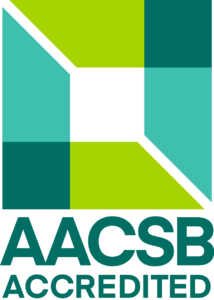- Ending: Examination
Teachers
Included in study programs
Teaching results
In particular, students acquire the following:
Knowledge
A. To understand the differences between data, information and knowledge in business practice, as well as the knowledge life cycle and its relationship to information technologies.
B. To know various types of IT tools and systems used for acquiring, storing, sharing and utilising knowledge in organisations (groupware, workflow systems, data management, knowledge and expert systems, business intelligence, etc.).
C. To know methods of knowledge acquisition—from non-automated expert-based approaches to automated techniques ranging from data mining to deep learning.
D. To understand knowledge processes with a focus on rule derivation and knowledge creation.
E. To understand principles of handling uncertainty in information and linguistic variables relevant to real-world decision-making.
Skills
F. To capture, process and manage tacit knowledge so it can be further utilised in information and knowledge systems.
G. To apply the fundamental principles and functions of knowledge acquisition tools (Weka, RapidMiner).
D. To identify and analyse knowledge processes and derive rules from available data or expert inputs.
E. To work with imprecise, linguistic and fuzzy information when solving practical decision-making problems.
Competentness
A. To independently evaluate and apply appropriate approaches to data, information, and knowledge processing within business processes.
B. To select and effectively use suitable IT tools that support knowledge management in organisations.
C. To integrate various knowledge acquisition methods—expert-based, data mining, and modern ML/DL approaches—into solving business tasks.
F. To design processes for capturing and managing tacit knowledge and implement them in an organisational context.
G. To utilise Weka and RapidMiner in practical modelling, rule extraction, and knowledge base development.
Indicative content
1. Definitions and main concepts of data, information and knowledge
2. The relation of data, information and knowledge to knowledge management and information technologies
3. Types of knowledge, knowledge life cycle in the enterprise
4. Tacit knowledge acquisition and capturing as a part of the knowledge engineering process
5. The importance of information and knowledge systems in business practice, the differences between them and their proper use
6. Knowledge representations as a core of the knowledge system
7. Metadata and knowledge required for building business intelligence and related solutions
8. Handling uncertainties in knowledge management technologies
9. Linguistic interpretation of knowledge and its formalization by information technologies and computational intelligence.
10. Modelling rule-based systems considering uncertainties, the quality of rule-based system and expert’s knowledge
11. Demonstration of software for managing knowledge in institution and mining knowledge form data
12. The role of artificial intelligence in knowledge management
13. Web technologies covering the life cycle of knowledge in the enterprise (groupware, semantic web, information retrieval, refinement)
Support literature
Džubáková, M. (2016). Znalostný manažment. Ekonóm.
Engelbrecht, A. P. (2007). Computational intelligence: An introduction (2nd ed.). John Wiley & Sons.
Grossmann, W., & Rinderle-Ma, S. (2015). Fundamentals of business intelligence. Springer.
Gyamfi, A., & Williams, I. (2021). Digital technology advancements in knowledge management. IGI Global.
Hajric, E. (2010). Knowledge management tools. http://www.knowledge-management-tools.net
Hudec, M. (2016). Fuzziness in information systems: How to deal with crisp and fuzzy data in selection, classification, and summarization. Springer.
Hurwitz, J. S., Kaufman, M., & Bowles, A. (2015). Cognitive computing and big data analytics. John Wiley & Sons.
Roy, A. K. (2013). Information and knowledge management: Tools, techniques and practices (1st ed.). NIPA.
Schreiber, A. Th., et al. (n.d.). Methodology CommonKADS. http://commonkads.org
Syllabus
1. Data, information, knowledge and their definitions Explanation of the distinctions between data, information, and expertise. Definition of key concepts and their importance for business processes and decision-making. Introduction to the DIKW hierarchy. 2. The relationship between data, information and knowledge in knowledge management and information technologies Connection between data processing, knowledge creation and the organisation’s IT infrastructure. The role of information systems in supporting knowledge processes. 3. Types of knowledge and the knowledge life cycle in an organisation Distinction between explicit and tacit knowledge. Phases of the knowledge life cycle: acquisition, storage, sharing, utilisation and renewal. 4. Capturing tacit knowledge as part of the knowledge engineering process Methods for identifying and capturing tacit knowledge from experts. Techniques such as interviews, observation, modelling and documentation. 5. The importance of information and knowledge systems in business practice, differences and correct usage Characteristics of information systems, expert systems and knowledge-based systems. Their differences, benefits and appropriate application in business environments. 6. Knowledge representation as the foundation of knowledge-based systems Forms of representing knowledge—rules, ontologies, semantic networks and decision tables. Importance of high-quality representation for inference mechanisms. 7. Metadata and knowledge necessary for building Business Intelligence solutions The role of metadata in organising, managing and interpreting data. Integration of metadata with data warehouses, BI solutions and analytical processes. 8. Managing uncertainty in knowledge management technologies Techniques for modelling uncertainty, such as fuzzy logic and probabilistic approaches. Use of these methods in decision-making and knowledge systems. 9. Linguistic interpretation of knowledge and its formalisation in information technologies Principles of linguistic variables and terms, and their application in fuzzy models. Formalisation of natural language for computational use. 10. Modelling rule-based systems with respect to uncertainty, rule quality and expert involvement Creation, evaluation and validation of rules and rule-based systems. Balancing automated rule extraction with expert-driven knowledge. 11. Software tools for enterprise knowledge management and data-driven knowledge discovery Demonstration of tools such as Weka, RapidMiner, SharePoint and knowledge repository systems. Practical examples of knowledge acquisition from data. 12. The role of artificial intelligence in knowledge management Use of ML/DL models in pattern extraction, recommendation systems and automation of knowledge processes. Overview of current trends and applications. 13. Web technologies supporting the knowledge life cycle in an organisation Groupware, semantic web, search, and information filtering tools. Technologies that support the sharing, refinement, and dissemination of knowledge.
Requirements to complete the course
Exam 60% The exam consists of two parts: the evaluation of the theoretical knowledge and knowledge of modelling of a specific example. The first part, verifies the achievement level of the teaching results A., B., C., whereas the second part verifies the level of the teaching results D, E., F.
Assignments during the semester 40% The aim of seminars is developing and defending the project and a short test. On the project, the students belong to smaller groups. Students organize their work in small groups. The evaluation of the results of the group’ s work (the project) is assessed as a whole for the whole group. The evaluation of the contribution of the individual members is the result of the internal agreement of the group and the subsequent discussion. Evaluation of projects and tests assess the following teaching results of C., D., E. F. G.
Student workload
Total study load (in hours):
4 credits x 52 teaching hours = 130 h
Distribution of study load:
lectures and seminars participation: 52 h
seminar participation: 13 h
project and test preparation: 30 h
preparation of exam: 35 h
Language whose command is required to complete the course
slovak
Date of approval: 02.04.2024
Date of the latest change: 29.03.2024

